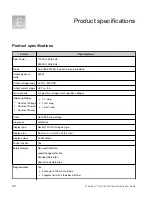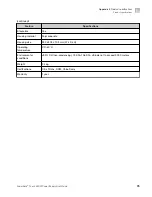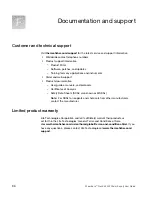
Electrical parameters for
electrophoresis
Ohm’s Law and Joule’s Law
Electrophoresis is the migration of a charged particle under the influence of an
electrical field. The power supply output parameters voltage, current, and power are
related by the following two equations:
• Voltage (V) = Current (I) x Resistance (R); (V=IR)
• Power (P) = Current (I) x Voltage (V); (P=IV)
Resistance
Resistance of the assembled electrophoresis cell is dependent on the conductivity
of the running buffer, gel buffer, the thickness of the gel, and the number of gels
being run. Although the resistance is determined by the gel system, the resistance
can vary over the course of an electrophoretic separation. For instance, in the Tris-
Glycine buffer system, the fast moving, highly conductive chloride ions in the gel
are gradually replaced by the slower moving, less conductive glycine ions from the
running buffer as the gel runs. As a result, the resistance of the gel increases as the
chloride/glycine front moves down the gel.
Voltage
The velocity with which an ion moves in an electric field will vary in proportion to the
field strength (volts per unit distance between anode and cathode). The higher the
voltage the faster an ion will move.
Current
Current is a function of the number of ions passing a given cross-section of the
circuit at a given time. For a given gel/buffer system, at a given temperature, current
will vary in proportion to the field strength (voltage) and/or cross-sectional area
(number and/or thickness of the gels). Ions in solution and at a given voltage will
move faster as the temperature increases, increasing current.
C
PowerEase
™
Touch 350W Power Supply User Guide
29
Содержание Invitrogen PowerEase Touch PS0350
Страница 37: ......










































